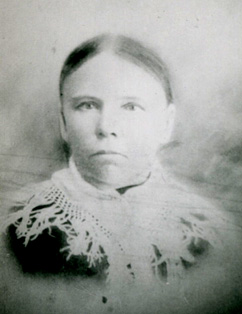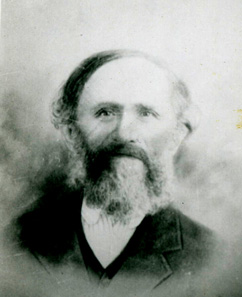|
|
||||||||||||||||||
|
|
||||||||||||||||||||
|
Rachel Smuin left London on the 4th of June 1861 [1863], on Packet ship Amazon, with a company of 895 Saints and Elders William Brammel, Edward L. Sloan and Richard Palmer on board. President George Q. Cannon held a meeting, in which the officers of the ship, the cabin passengers and visitors on board listened with marked attention. The departure of the ship Amazon from London laden with Saints was fulfillment of a prophecy. Some years before an Elder Kelsey was laboring in London and he predicted in a public meeting that ships, laden with Saints, would leave that port emigrating to Zion. It was with no intention of bringing about the fulfillment of the prophecy that they chartered the Amazon, because they did not know about it until three days before they sailed. The chartering of this vessel was not a matter of choice but one of necessity. They could not obtain a vessel in Liverpool suitable for their needs; vessels were scarce the spring of 1863 and they were compelled to go to London to find one. This was the first ship with Saints aboard to sail from London, down the Thames River and out into the English Channel. The rest had sailed from Liverpool. There were several Elders aboard. During the voyage, prayers were said night and morning, and at 9 o’clock each night the hurricane deck was cleared of all sisters and the guards were stationed to see that no female went up on deck after that hour and that no sailor went below. The Saints were divided into five wards and each took turns cooking for the group. They also took turns eating. The brass band from South Wales entertained the Saints on the voyage. The band was made up of Saints from Wales going to Zion. Rachel Smuin was accompanied by her sister, Matilda, on the voyage. The Amazon sailed down the Thames River and out into the English Channel; a strong wind came up and continued to increase in violence until they were compelled to drop the anchor in a sheltered cove of the Isle of Wight. They reached the Isle with some difficulty on the morning of June 7, 1863. On the morning of June 7th, an addition to the company was received in the shape of a baby girl born to Brother and Sister Harris of Stratford. She was given the name of Amazon Seaborn Harris. On the evening of the 9th of June they pulled up the anchor, slipped around the corner of the island under the influence of a gentle breeze which quickened and increased the difficulty in clearing the channel. The Captain made his passengers as comfortable as possible on this voyage. There was very little sickness, considering the number of passengers on board. The Amazon landed in Castle Gardens, New York, sometime near the first of July 1863. The immigrants left immediately for Albany, New York, and then went on to Florence, Nebraska. The company from the ship Cynosure also traveled to Florence with them. The pioneers outfitted themselves in Florence and started west. We do not know much about her journey west. We do know that she arrived sometime in September 1863 in the Salt Lake Valley. Rachel’s parents, Thomas Smuin and Sarah Hook Smuin, also, were pioneers. They came from England on the ship Colorado, July 14, 1868. |
|
|
|
In 1866, Rachel and her family moved to Morgan, Utah, where Henry’s uncle, Martin Heiner, lived. Their second child was born while they were living in Morgan. In 1868, they packed their belongings into the wagon and started south to Pleasant Grove. Here they bought a piece of land at the foot of a sand hill and built their home. It was humble and plain. It had a dirt roof, and the cooking was done at a fireplace. Stoves were very scarce as well as expensive. In December 1870, sorrow visited their home. Arthur, the eldest child, was accidentally run over with a loaded wagon and he died three days later from the injuries. Eliza tells in her history that when she was six years old, her parents dug a cellar, rocked it up on the sides so they could make bins for their grain. The log house was then moved on the cellar and the dirt roof replaced with shingles. This took place in 1876. There were five children by then and they were glad for a little more room. In 1878, the grasshoppers were so bad that they ate all the grain in the settlement. It was terribly disappointing and a great trial to these hard working people. In June they leveled the ground again and planted beans. These grew well and were harvested and sold for the winter’s supply of flour and other necessities and for the winter. In this way, they were saved from starvation that year. The Indians were troublesome in the early days in all of the settlements, but people had been told to feed them rather than quarrel with them. In the fall they would come after something to eat and the saints tried to keep peace with them. Many times the men stood guard at night to protect their families. The children were taught early in life to be helpful in the home and on the farm. There was always something to do especially at harvest time and fruit drying time in the fall. They would store what they needed for their own use and sold the remainder of the fruit for other things they needed for the winter. Education was very limited in the early pioneer times. There was a small school to go to but not enough money to pay the tuition for all the children in the family. Eliza and Martin did the janitor work in the school to pay their way, as they had such a great desire to attend school. Rachel and Henry Dittmore had firm and abiding testimonies of the gospel of Jesus Christ which was a great comfort to them in bearing the trials and sorrows as parents of a large family. Henry and Rachel Dittmore were the parents of eleven children, nine of whom grew to maturity. The children of the Dittmore family were taught the gospel of Jesus Christ in their home by parents who lived their religion in daily life, teaching them the important things of living pure, clean, virtuous lives. The children were sent to the different organizations of the Church and the boys received the priesthood as they became of age. Rachel and Henry Dittmore endured the hardships, enjoyed few advantages and sacrificed their all to preserve and leave their family the priceless heritage of a good name. All of their children were married in the temple, so they felt repaid for their struggles. Another great sorrow came to Rachel Dittmore in 1893, when her husband took sick with pneumonia and died January 9 1893. May the grandchildren and great-grandchildren emulate the wonderful example this good woman set before them and appreciate in some way the principles she stood for, by living honorable lives. Rachel Smuin Dittmore died 8 May 1908, in Pleasant Grove, Utah at the age of 64. She spent a long, useful life of good deeds for others. She had finished the mission the Lord sent her on earth to fulfill and was faithful and true to the end. |
|
[Benjamin F. Heaps] [Benjamin F. & Ann Eva] [Ben's Family Photos] [Ann's Family Photos] [First Generation] [More Photos] [Ancestry List] [David Heaps] [Rachel Smuin Dittmore] [Sarah Hook Smuin] [Immigration & Migration] [Past Reunions] [Restored Photos] [Family Recipes] [Messages & News] |

